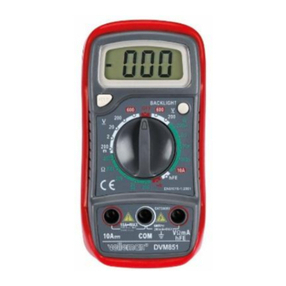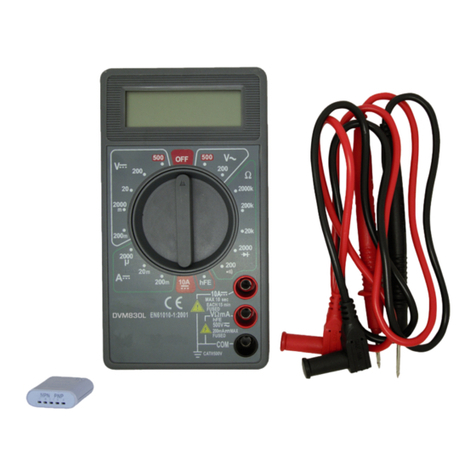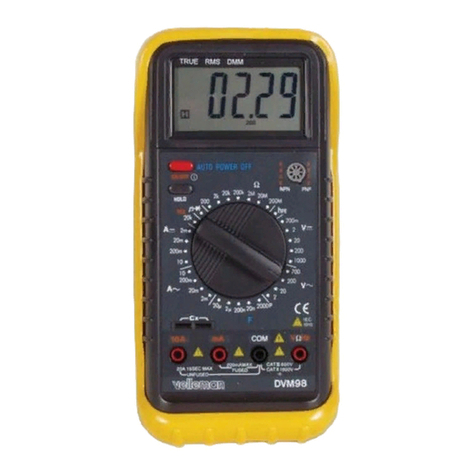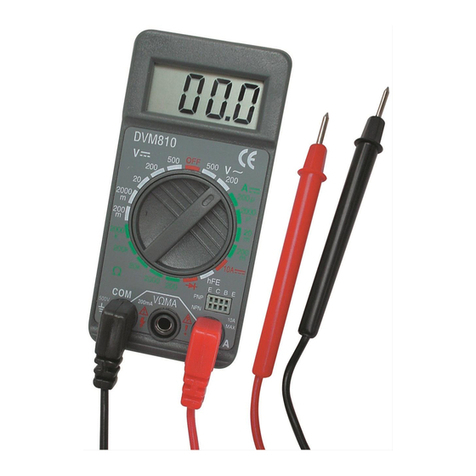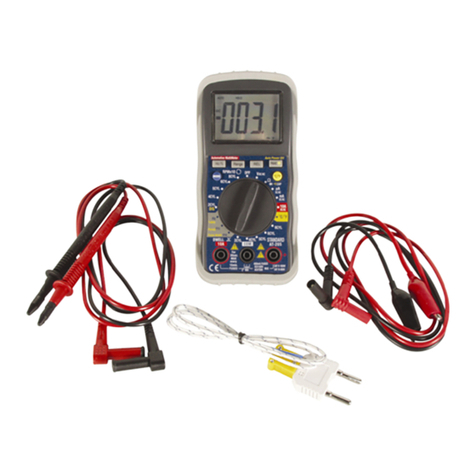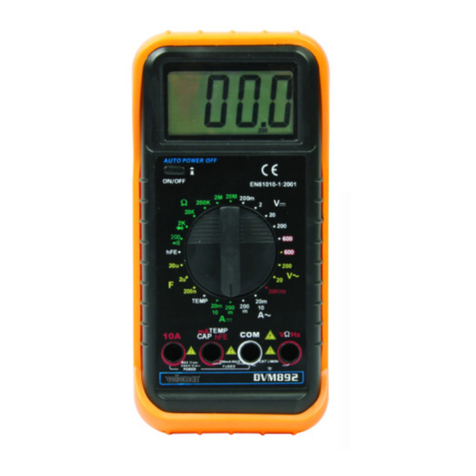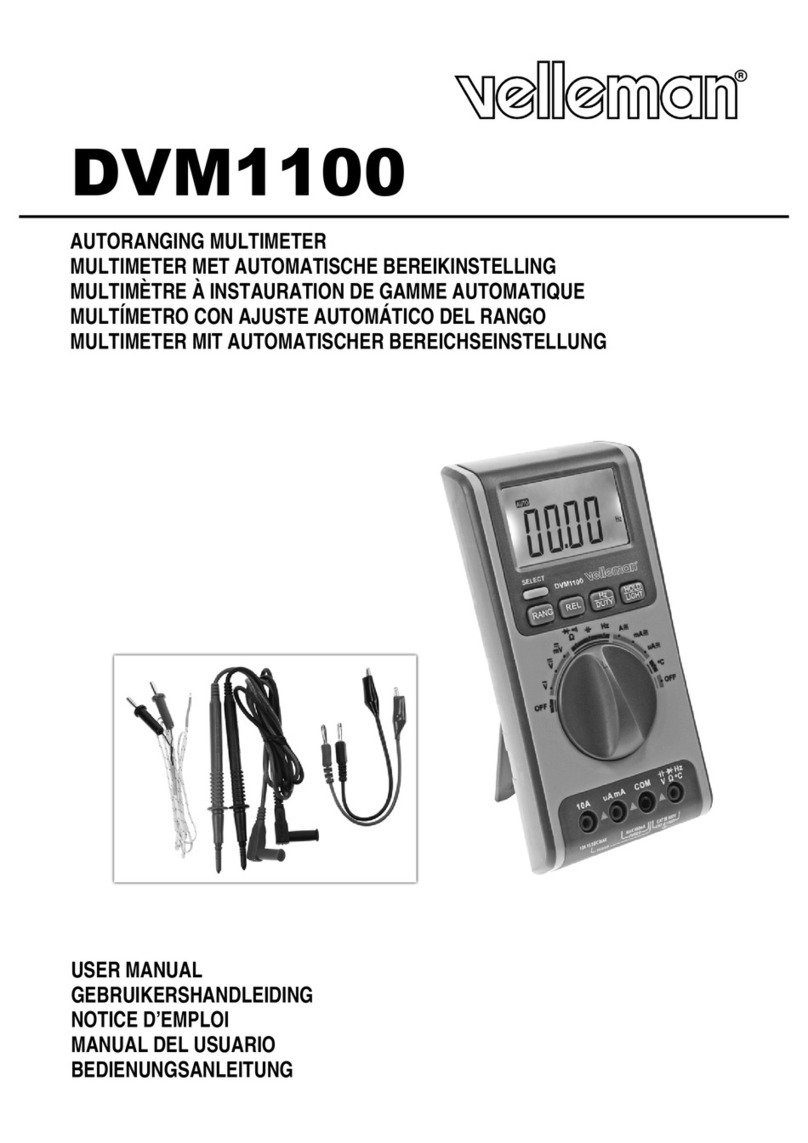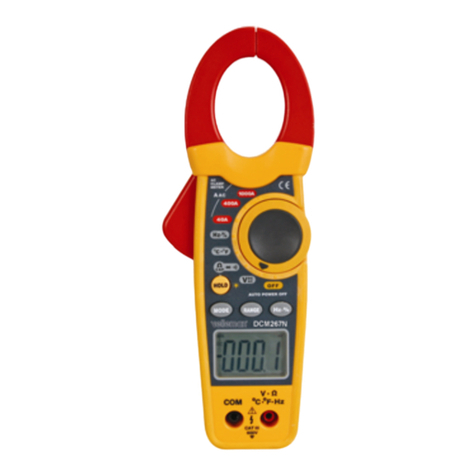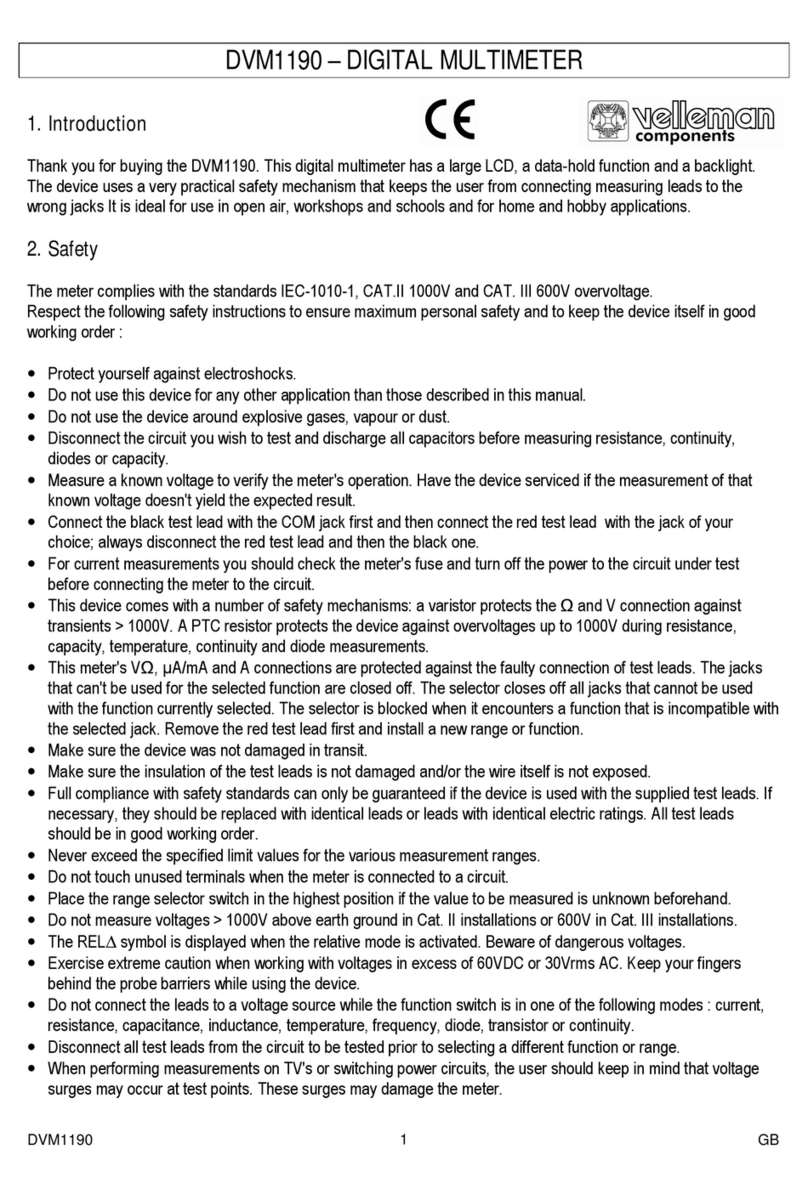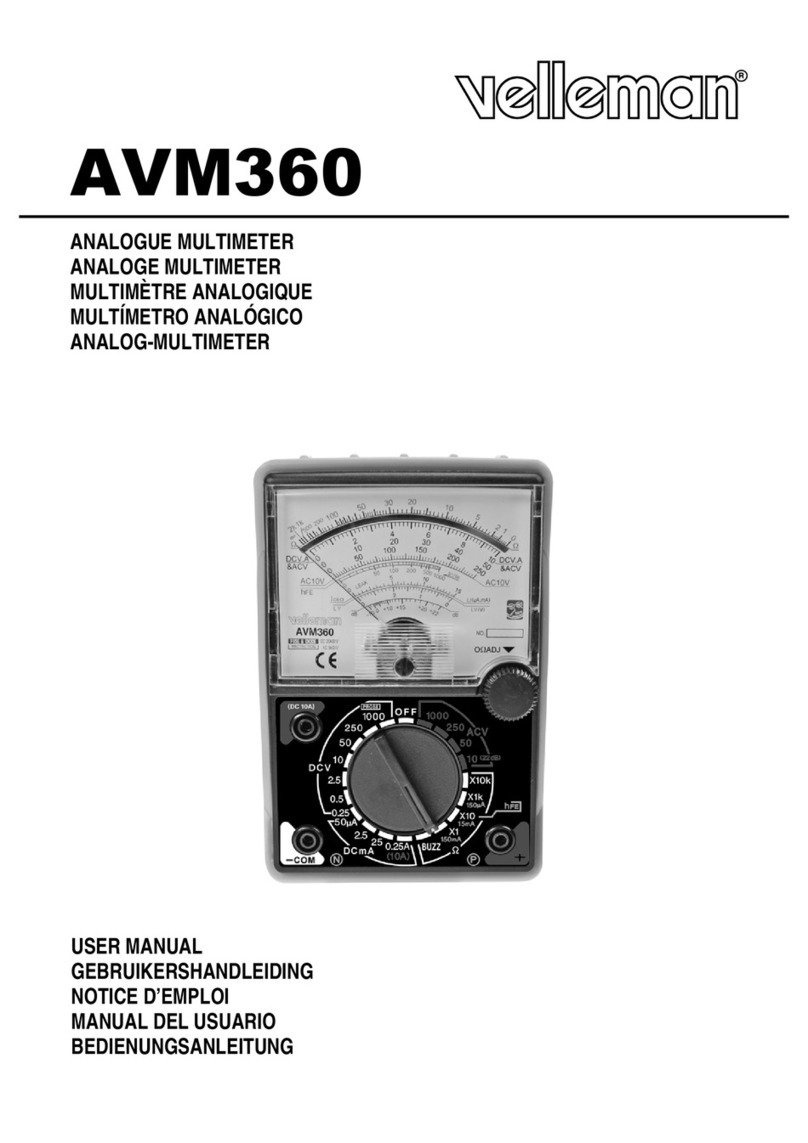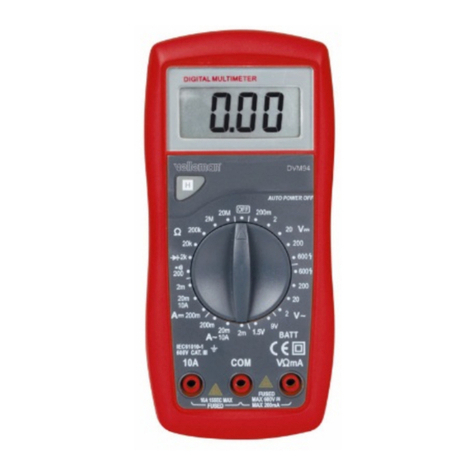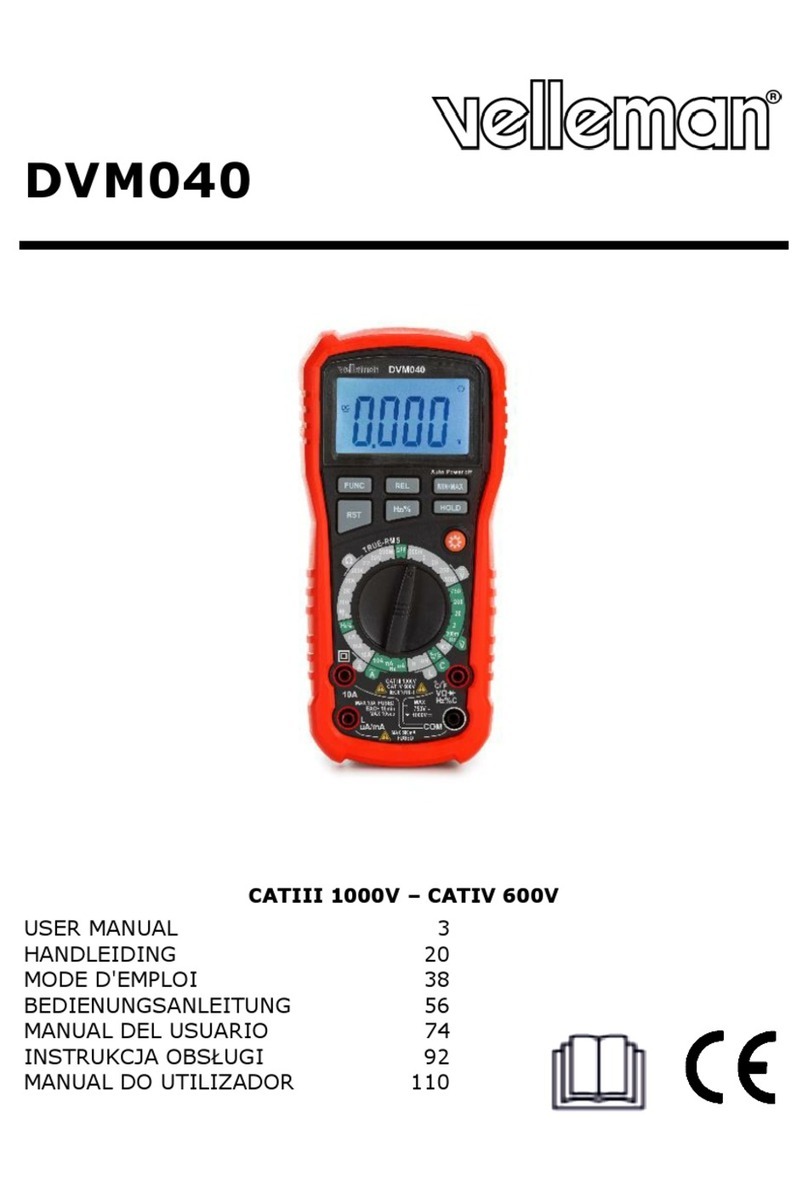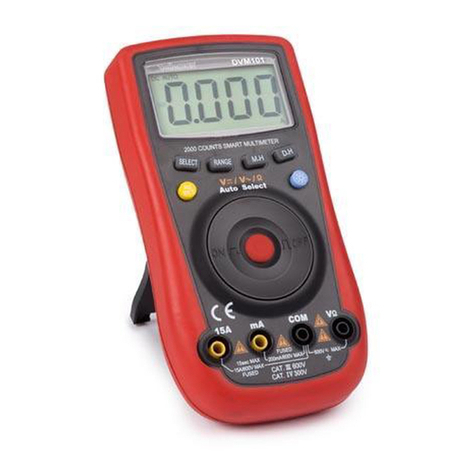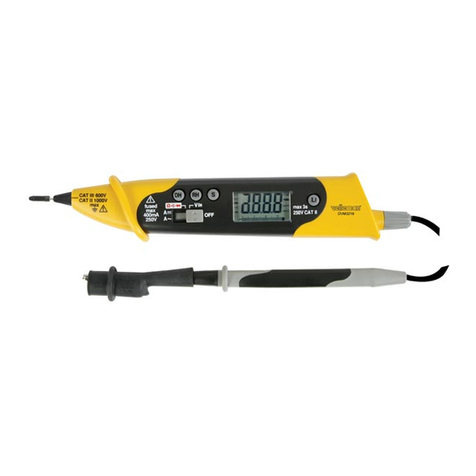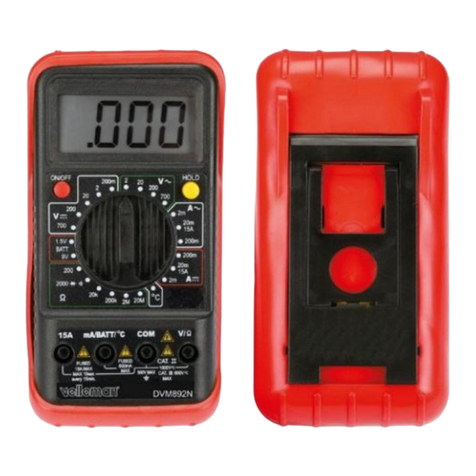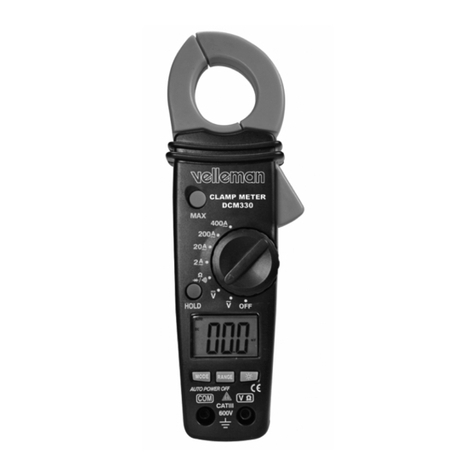If the meter is used near a source of electromagnetic interference, the display
may become unstable or may indicate large errors.
Use the meter only as specified in this manual; otherwise, the protection
provided by the meter may be impaired.
Use extreme caution when working around bare conductors or bus bars.
Do not operate the meter near explosive gases, vapour, or dust.
Verify the meter’s operation by measuring a known voltage. Do not use the
meter if it operates abnormally. Protection may be impaired. When in doubt,
have the meter serviced by a qualified technician. Make sure the device cannot
be used until it is repaired.
When making connections, connect the common test lead (black) before
connecting the live test lead (red). When disconnecting, disconnect the live test
lead (red) before disconnecting the common test lead (black).
Before changing functions or measuring range, disconnect the test leads from
the circuit under test.
For all DC functions, to avoid the risk of shock due to possible improper
readings, verify the presence of any AC voltages first by using the AC function.
Then select a DC voltage range equal to or greater than the AC range.
Use a 9 V battery, properly installed in the meter’s battery case, to power the meter.
Replace the battery as soon as the battery indicator appears. With a low
battery, the meter may produce false readings that can lead to electric shock
and personal injury.
Do not operate the meter with the case (or part of the case) removed.
Always verify that all connections are reliable and safe.
Avoid body contact with ground potential (e.g. metallic terminals, output
sockets, lead clamp…) while measuring. Make sure to be electrically insulated
from ground during measurement.
